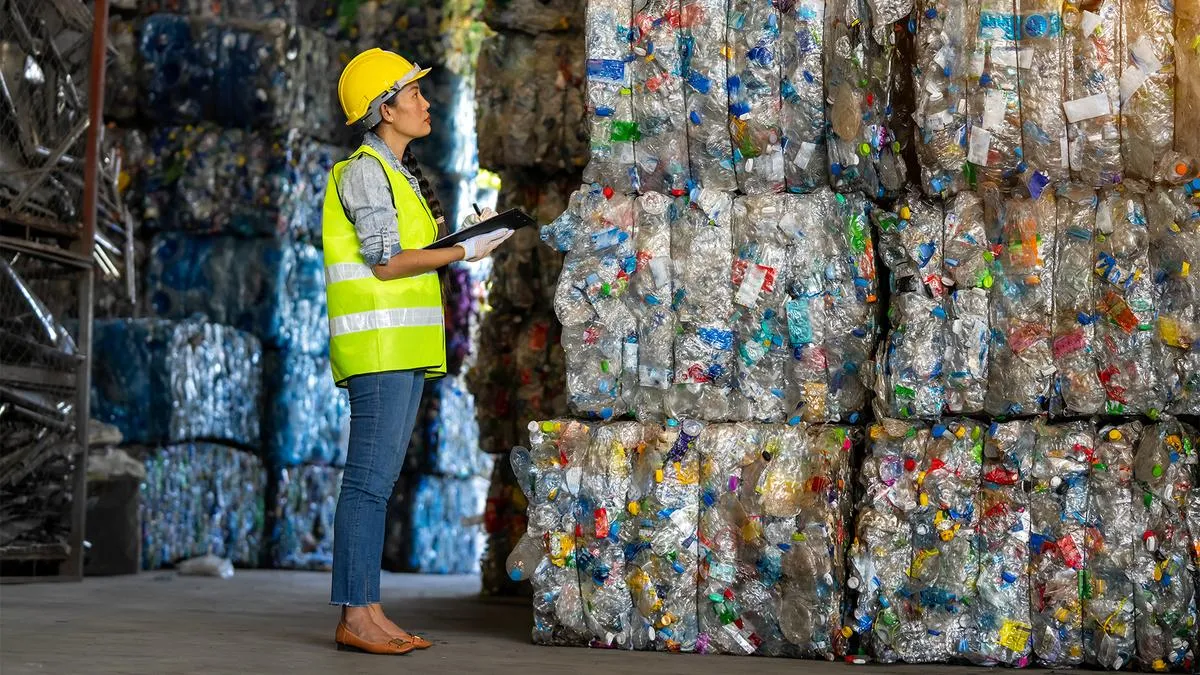Introduction
Plastic waste has long been a pressing environmental issue, with millions of tons polluting our oceans and landfills each year. However, Japan has pioneered an innovative solution that promises to turn this problem into an opportunity. By utilizing cutting-edge 450°C technology, Japan is transforming plastic waste into valuable resources, essentially turning trash into gold. This groundbreaking process not only addresses the plastic waste crisis but also contributes to a more sustainable and circular economy.
The Plastic Waste Crisis
Plastic waste is one of the most significant environmental challenges of our time. Each year, approximately 300 million tons of plastic are produced globally, with a substantial portion ending up in landfills or the natural environment. This non-biodegradable material can persist for centuries, causing harm to wildlife, ecosystems, and even human health. Traditional recycling methods have proven inadequate in managing the sheer volume of plastic waste, prompting the need for more innovative solutions.
Japan's 450°C Technology: An Overview
Japan's revolutionary approach to plastic waste management involves a process known as pyrolysis. This technique heats plastic waste to temperatures as high as 450°C in the absence of oxygen, breaking it down into its basic chemical components. The result is a range of valuable products, including oil, gas, and carbon black, which can be used as raw materials for various industrial applications.
How Pyrolysis Works
- Collection and Sorting: Plastic waste is collected and sorted to remove contaminants and non-recyclable materials.
- Shredding: The sorted plastic waste is shredded into smaller pieces to facilitate the pyrolysis process.
- Heating: The shredded plastic is fed into a pyrolysis reactor, where it is heated to around 450°C in an oxygen-free environment.
- Conversion: At this high temperature, the plastic waste breaks down into gases, oils, and solid residues (carbon black).
- Separation and Collection: The resulting products are separated and collected for further processing and use.
Benefits of Japan's 450°C Technology
Environmental Benefits
- Reduction in Plastic Pollution: By converting plastic waste into valuable resources, this technology significantly reduces the amount of plastic that ends up in landfills and oceans.
- Lower Carbon Footprint: The pyrolysis process generates fewer greenhouse gases compared to traditional plastic disposal methods, contributing to a reduction in overall carbon emissions.
Economic Benefits
- Resource Recovery: The valuable products derived from plastic waste can be sold or used as raw materials, creating a new revenue stream.
- Energy Production: The gases produced during pyrolysis can be used to generate energy, providing an additional economic benefit.
Technological Advancements
- Innovation in Waste Management: Japan's 450°C technology represents a significant advancement in the field of waste management, showcasing the potential of innovative solutions to address global challenges.
- Scalability: This technology can be scaled up to handle large volumes of plastic waste, making it a viable solution for countries around the world.
Challenges and Future Prospects
While Japan's 450°C technology offers numerous benefits, there are still challenges to overcome. The initial investment required for setting up pyrolysis facilities can be substantial, and there is a need for continued research and development to optimize the process and reduce costs. Additionally, public awareness and participation in plastic waste collection and sorting are crucial for the success of this technology.
Looking ahead, the future prospects for Japan's 450°C technology are promising. As more countries recognize the importance of sustainable waste management, the adoption of this technology is likely to increase. Continued innovation and collaboration will be key to maximizing the potential of this groundbreaking approach to plastic waste.
FAQs
What is pyrolysis?
Pyrolysis is a process that involves heating organic materials to high temperatures in the absence of oxygen, breaking them down into simpler chemical compounds.
How does Japan's 450°C technology work?
Japan's 450°C technology uses pyrolysis to convert plastic waste into valuable products such as oil, gas, and carbon black by heating the waste to around 450°C in an oxygen-free environment.
What are the benefits of this technology?
The benefits include reducing plastic pollution, lowering carbon emissions, recovering valuable resources, generating energy, and advancing waste management technology.
Are there any challenges associated with this technology?
Challenges include the high initial investment for setting up pyrolysis facilities, the need for ongoing research and development, and the importance of public participation in plastic waste collection and sorting.
What are the future prospects for this technology?
The future prospects are promising, with potential for increased adoption worldwide as countries prioritize sustainable waste management solutions.
Conclusion
Japan's 450°C technology is a game-changer in the fight against plastic waste. By transforming plastic waste into valuable resources, this innovative approach addresses a critical environmental issue while contributing to a more sustainable and circular economy. As the world continues to seek solutions to the plastic waste crisis, Japan's pioneering technology stands as a beacon of hope and progress.









0 Comments